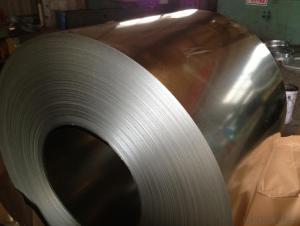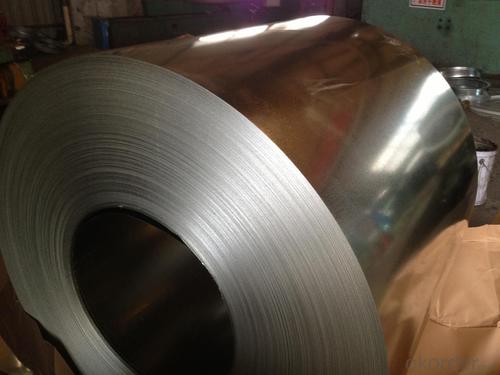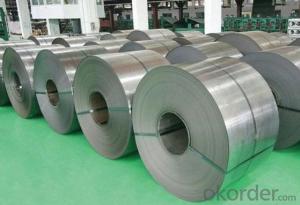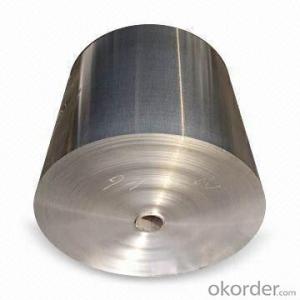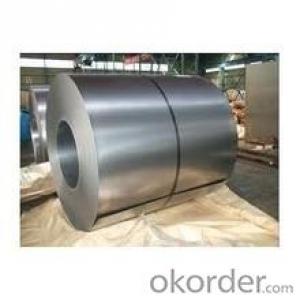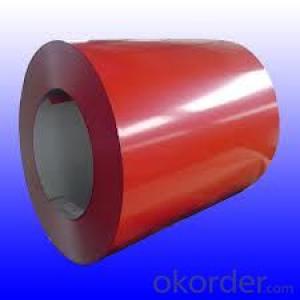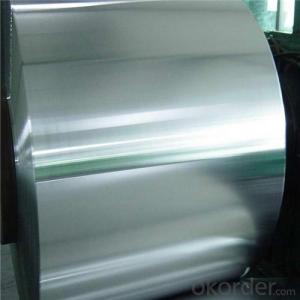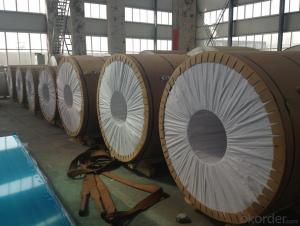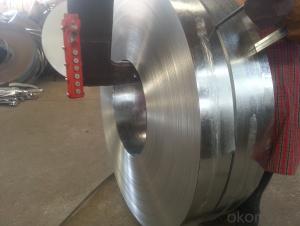steel coils/CRC Baosteel,steel plate and coils
- Loading Port:
- Shanghai
- Payment Terms:
- TT OR LC
- Min Order Qty:
- 50 m.t.
- Supply Capability:
- 3000 m.t./month
OKorder Service Pledge
OKorder Financial Service
You Might Also Like
Cold rolled steel coils
Commerical and Construction building material
Raw material: Baosteel,Shou Steel and other big mill
Production Standard: JIS,AISI,ASTM,BS,DIN,GB
Specification:
Width:0.2-3.0mm
Length:600-1500mm
Coil ID:508mm/610mm
Customer's request of size is negotiable
Material: Q195,SPCC,DC01,SPCC-SD
Coil weight:3-9MT
Classification:
Classification | Designation | Characteristics | Size(mm) | Main applications |
Commercial quality | SPCC,SPCCT | Commercial quality suitable for bending fabrication and simple forming; this is the type in greatest demand. | Thickness 0.18-3.0 Width 600-1500 | Refrigerators, cabinets, power distribution boards and drums. |
Drawing quality | SPCD | Drawing quality second only to that of SPCEN. Excellent uniformity. | Thickness 0.18-2.0 Width 600-1250 | Automobile floor and roof panels. |
Deep-drawing quality | SPCE,SPCF | Deep-drawing quality. With metallurgically controlled grain size, it retains its beautiful finish even after being deep-drawn. | Thickness 0.18-2.0 Width 600-1250 | Automobile fenders and quarter panels |
Chemical components
Grade | Chemical Components | ||||
C | Mn | P | S | Alt | |
SPCC | ≤0.12 | ≤0.50 | ≤0.035 | ≤0.025 | ≥0.020 |
SPCD | ≤0.10 | ≤0.45 | ≤0.030 | ≤0.025 | ≥0.020 |
SPCE | ≤0.08 | ≤0.40 | ≤0.025 | ≤0.020 | ≥0.020 |
Mechanical Properties
Grade | Strengh | ||||
YS | TS | Elongation(%) | |||
MPA | δ | S | P | ||
SPCC DC01 | 130-260 | 270-410 | 28 | ||
SPCD DC03 | 120-240 | 270-390 | 34 | ||
SPCE SPCEN | <210 | 270-370 | 38 | ||
DC04 DC05 | <210 | 270-370 | 38 | ||
AISI 1006 | 275-365 | 275-380 | 34 | 32 | 30 |
AISI 1008 | 275-390 | 275-410 | 32 | 30 | 28 |
AISI 1010 | 295-410 | 295-430 | 30 | 29 | 28 |
AISI 1020 | 355-490 | 355-500 | 26 | 25 | 24 |
AISI 1045 | 530-685 | 16 | |||
AISI 1050 | 540-715 | 14 | |||
AISI 1060 | 550-775 | 12 | |||
ST33 S185JR | 185-195 | 315-430 | 33 | ||
ST37 S235JR | 215-235 | 375-500 | 25 | ||
ST37 S355JR | 275-325 | 510-680 | 18 | ||
Tolerance
Thickness:+/-0.02~+/-0.20mm according to size
MOQ:50MT
Chinebec International also provide service for each of our overseas customer with factory audited,inspection and monitoring and order organization
- Q: How are steel coils transported and stored?
- Steel coils are typically transported using flatbed trailers, coil carriers, or railcars. These coils are securely strapped or banded to prevent movement during transportation. Once they reach their destination, they are usually stored in warehouses or outdoor storage yards. The coils are stacked on top of each other, often with the help of specialized equipment, to optimize space utilization. They may also be stored horizontally on racks or stored vertically in specially designed coil racks. Proper handling and storage procedures are followed to ensure the safety of personnel and to prevent damage to the steel coils.
- Q: Hello,is it possible to divide an alloy in its own elements? I am particularly interested in Stainless Steel, which is made of Nickel, Chrome and Iron. Do you have an idea of where can I find some more information (blogs, reviews, sites or books)?Thanks for your help
- Yes it is possible to recover individual elements from an alloy such as stainless steel, but not easy. Look up etching of stainless steel on google. This same etching solution will completely dissolve stainless steel. These solutions are strong acids such as H2SO4 and HNO3 so safety goggles and good ventilation are absolutely required. Once the metal has been dissolved, then you would need to use a qualitative analysis scheme to precipitate out the different metals one at a time as compounds, then do additional reactions to recover the metallic elements.
- Q: i found a similar question asking what metals were in stainless steel but i don't know if they are the same.... they probably aren't.
- steel is iron with a little bit of carbon mixed in. how much carbon determines the hardness of the steel. stainless steel is the same mostly, it has nickle and chromium added in to make it corrosion resistant.
- Q: How are steel coils used in the production of agricultural equipment?
- Steel coils are used in the production of agricultural equipment as they serve as the primary material for manufacturing various components such as frames, brackets, and structural supports. These coils are shaped, cut, and welded to create the required parts, which are then assembled to form agricultural machinery like tractors, plows, and harvesters. The strength and durability of steel make it an ideal choice for withstanding the demanding conditions and heavy workloads typically associated with agricultural equipment.
- Q: How are steel coils used in the production of automobile frames?
- Automobile frames rely heavily on steel coils, which are indispensable for their production. These coils, crafted from top-notch steel, undergo a process of uncoiling before being fed into a stamping press, where they assume various forms, constituting parts of the frame. The presence of steel coils is crucial as they furnish the frame with the requisite strength and rigidity, ensuring it can bear the vehicle's weight and maintain structural integrity. Once shaped, the coils are frequently welded together to construct the frame structure. This welding procedure securely binds the individual components, guaranteeing that the frame can endure the forces and strains encountered during the vehicle's operation. Utilizing steel coils in the production of automobile frames also allows for design flexibility, as they can be effortlessly shaped and manipulated to fulfill specific requirements. Moreover, steel coils possess exceptional durability and corrosion resistance, rendering them ideal for automotive applications. Frames fashioned from these coils are not only robust and dependable but also capable of withstanding harsh conditions and road vibrations. This not only enhances the vehicle's safety but also contributes to its longevity and overall performance. Steel coils also find use in other critical vehicle components, including suspension systems, chassis, and body panels. Their versatility, strength, and cost-effectiveness make them a favored choice in the automotive industry. Overall, the incorporation of steel coils in automobile frame production plays a significant role in guaranteeing the safety, durability, and performance of modern vehicles.
- Q: What are the common coil widths and thickness combinations available for steel coils?
- Common coil widths for steel coils range from 600mm to 2000mm, while common thickness combinations vary from 0.4mm to 3.0mm.
- Q: What other metal is used to make rings? My girlfriend is allergic to stainless steel, but she wears a silver/grayish color ring, but I'm not sure what metal it is. Any ideas? Thanks!
- In addition to silver, white gold, and titanium, it could be an alloy-a mix of a bunch of different metals. If she's allergic to stainless steel, though, she's probably allergic to nickel as well, which is often in metal alloys. Pewter is another silver-color metal that is sometimes used in rings. A pretty expensive silver-colored metal is platinum, but unless your girlfriend is rich or you gave it to her it's pretty unlikely she has a platinum ring. Your best bet would be to ask her if she knows what it's made of.
- Q: What are the different types of steel coil cutting tools?
- There are several different types of steel coil cutting tools available in the market. These tools are specifically designed to cut steel coils efficiently and accurately. Some of the common types of steel coil cutting tools are: 1. Slitting shears: Slitting shears are widely used for cutting steel coils into narrow strips. These shears have multiple blades that make clean and precise cuts without causing any damage to the material. They are typically used for high-volume production and can handle various thicknesses of steel coils. 2. Rotary shears: Rotary shears are another type of cutting tool commonly used for cutting steel coils. They consist of rotating blades that shear through the material as it passes through. Rotary shears are ideal for cutting medium to thick steel coils and are known for their high cutting speed and accuracy. 3. Guillotine shears: Guillotine shears are heavy-duty cutting tools that can handle thick steel coils. They work by using a downward force to cut through the material with a single clean stroke. Guillotine shears are known for their power and precision, making them suitable for cutting large volumes of steel coils. 4. Laser cutting machines: Laser cutting machines are advanced cutting tools that use a high-powered laser beam to cut through steel coils. They offer precise and intricate cuts with minimal heat distortion. Laser cutting machines are ideal for cutting complex shapes and patterns on steel coils. 5. Water jet cutting machines: Water jet cutting machines use a high-pressure stream of water mixed with abrasive particles to cut through steel coils. This method is highly accurate and does not generate heat, making it suitable for cutting heat-sensitive materials. Water jet cutting machines can cut through various thicknesses of steel coils and produce smooth edges. Each type of steel coil cutting tool has its own advantages and is suitable for different applications. The choice of tool depends on factors such as the thickness of the steel coil, required precision, production volume, and budget.
- Q: I have heard that heating the steel and applying oil will help with corrosion, and will give that aged look. I would like to know finishes available without painting. thanks
- No, I don't think the oil will do what you want. I have heated and quenched metal in oil several times (to harden it) and it did not give a finish to steel. I have heard of heating steel to a high temperature (red) and putting powdered sulfur on it, it will make a black finish. BUT, sulfur stinks and you would not do this indoors. And I don't know what the results would be like for indoor use. At the hardware store, you can find something like POR (paint on rust), a brand name of rust neutralizer. There are others. You spray it on (or paint) and it will turn rust into a glossy black material. Other than that, I think paint is your best option. Check out the new finishes they have now, if you haven't checked, they have come a long way. If you let them dry completely (in the sun) the spray can finishes are very durable. Good luck! Ooops, I forgot about gun finishes. Yes, some are blue, you might be thinking of that, but that is only if you put several coats on. One coat might do it. Plus, there are other colors, such as black (see the parkerizing link on the list). Here is a good company, they can be lots of help, too.
- Q: How are steel coils used in the production of shipping containers?
- Steel coils are used in the production of shipping containers as they serve as the primary material for constructing the container body. These coils are cut, shaped, and welded together to form the walls, roof, and floor of the container, providing strength, durability, and protection for the goods being transported.
Send your message to us
steel coils/CRC Baosteel,steel plate and coils
- Loading Port:
- Shanghai
- Payment Terms:
- TT OR LC
- Min Order Qty:
- 50 m.t.
- Supply Capability:
- 3000 m.t./month
OKorder Service Pledge
OKorder Financial Service
Similar products
Hot products
Hot Searches
Related keywords
